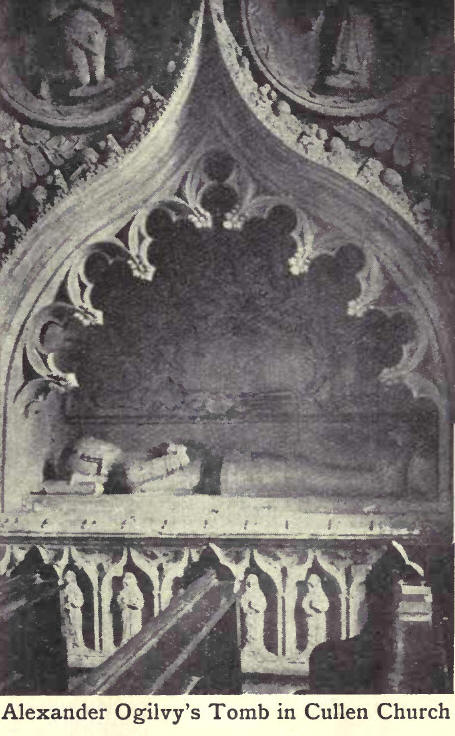|
Banffshire cannot claim to
possess any ancient abbey or cathedral—not even such stately ruins as Elgin.
Recent days have seen churches erected of no mean architectural dignity; and
the county still contains relics of interesting old church foundations.
In very early times St Moluag
of Lismore founded an ecclesiastical community at Mortlach. Its history is
obscure till the eleventh century. Then we hear of a battle fought in 1010
between the Scots under Malcolm and the Danes. In gratitude for his victory
Malcolm added three spear-lengths to the church. Later in the century, the
monastic' foundation was made a bishopric by Malcolm Canmore, and the abbot
became bishop. The first recorded bishop was Beathan, who was succeeded by
Donert, Cormac, and Nectan. In David I's reign the see was transferred to
Aberdeen. The town and monastery of Mortlach with five churches and the
dependent monastery of Cloveth (Cabrach) formed part of the revenues of the
bishopric of Aberdeen. The old building at Mortlach is now the parish church
and its walls, though some nine centuries old as is believed, are still
strong and safe. The building has during the last hundred years been
enlarged and improved. The interior is of a singularly fine appearance, with
interesting carved slabs and various monuments.
The ruins of the old church
of Gamrie represent one of the oldest buildings in the county.- Its tutelar
saint was St John the Evangelist, and the date of its erection is given as
1004. It ceased to be used in 1830.
The cruciform parish church
of Cullen has had a long history. The main part of the existing building was
erected -in 1543, according to a charter in Cullen House, which changed the
previou&, chapel into a collegiate church for

a provost, six prebends and
two singing boys. A splendid example of an aumbry, with an appropriate
inscription from the Vulgate, graces the north-east wall and alongside is a
magnificent monument to the memory of Alexander Ogilvy of Findlater, the
founder of the Collegiate Church; the monument has been described as one of
the finest Gothic designs in the North of Scotland. Among other monuments is
one to the memory of James, Earl of Findlater and Sea-field, Chancellor of
Scotland at tie Union. The Sea field gallery is a piece of rare workmanship,
and was erected three centuries ago when the family removed from Find-later
to Cullen House.
The old church of Deskford,
used for service till 1872, contains what some consider to be the. finest
"Sacrament House" in Scotland. It is of pre-Reformation date, an inscription
bearing that it was provided by Alexander Ogilvy and Elizabeth Gordon, his
spouse, in 1551. The aumbry is of carved freestone, about eight feet high.
Below two angels, holding a monstrance, there is a small doorway to a
chamber in the wall" with a recess on either hand. At the sides and top of
the doorway there is a vine branch with bunches of grapes. Across the top
are the words "Os meum es et Caro mea," and on the sill "Ego sum panis vivus
qui de celo descendi si quis manducaverit ex hoc pane vivet in eternum.
Johan sexto et cetera." |

